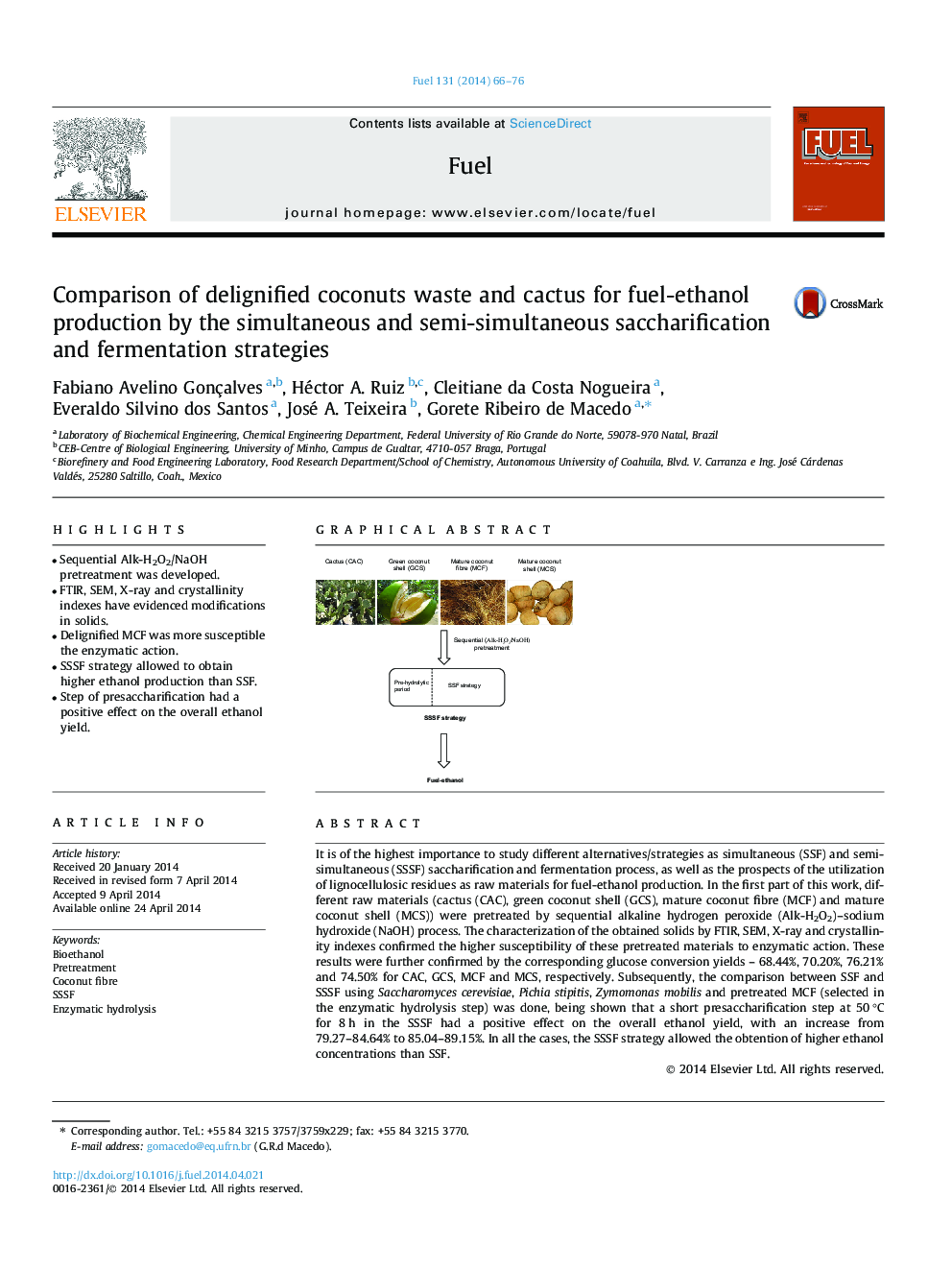| کد مقاله | کد نشریه | سال انتشار | مقاله انگلیسی | نسخه تمام متن |
|---|---|---|---|---|
| 206223 | 461150 | 2014 | 11 صفحه PDF | دانلود رایگان |
• Sequential Alk-H2O2/NaOH pretreatment was developed.
• FTIR, SEM, X-ray and crystallinity indexes have evidenced modifications in solids.
• Delignified MCF was more susceptible the enzymatic action.
• SSSF strategy allowed to obtain higher ethanol production than SSF.
• Step of presaccharification had a positive effect on the overall ethanol yield.
It is of the highest importance to study different alternatives/strategies as simultaneous (SSF) and semi-simultaneous (SSSF) saccharification and fermentation process, as well as the prospects of the utilization of lignocellulosic residues as raw materials for fuel-ethanol production. In the first part of this work, different raw materials (cactus (CAC), green coconut shell (GCS), mature coconut fibre (MCF) and mature coconut shell (MCS)) were pretreated by sequential alkaline hydrogen peroxide (Alk-H2O2)–sodium hydroxide (NaOH) process. The characterization of the obtained solids by FTIR, SEM, X-ray and crystallinity indexes confirmed the higher susceptibility of these pretreated materials to enzymatic action. These results were further confirmed by the corresponding glucose conversion yields – 68.44%, 70.20%, 76.21% and 74.50% for CAC, GCS, MCF and MCS, respectively. Subsequently, the comparison between SSF and SSSF using Saccharomyces cerevisiae, Pichia stipitis, Zymomonas mobilis and pretreated MCF (selected in the enzymatic hydrolysis step) was done, being shown that a short presaccharification step at 50 °C for 8 h in the SSSF had a positive effect on the overall ethanol yield, with an increase from 79.27–84.64% to 85.04–89.15%. In all the cases, the SSSF strategy allowed the obtention of higher ethanol concentrations than SSF.
Figure optionsDownload as PowerPoint slide
Journal: Fuel - Volume 131, 1 September 2014, Pages 66–76
